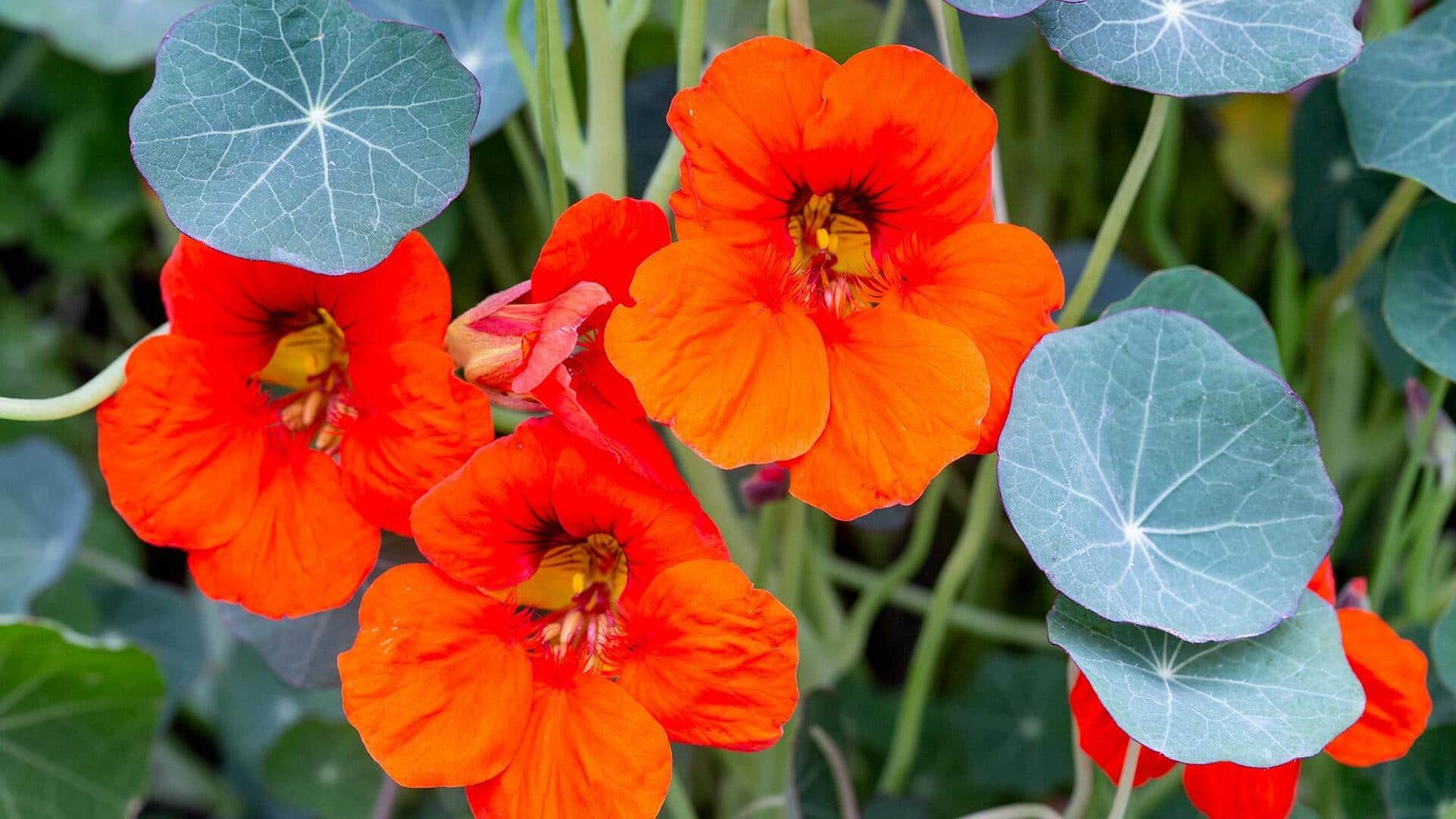
How to grow nasturtiums indoors: A guide
What's the story
If you're looking for vibrant, easy-to-grow plants that could add a splash of color to your indoor decor, we recommend nasturtiums.
With their bright flowers and edible leaves, these plants are loved by gardeners and home decorators alike.
You can grow nasturtiums indoors, something that's not only doable but also rewarding, with the right approach.
Here are some practical insights into growing these cheerful plants inside your home.
Container selection
Choosing the right container
Choosing the right container is essential for indoor nasturtium growth.
Choose pots with decent drainage holes to avoid waterlogging, which can damage the roots.
A pot with a diameter of about six to eight inches is good for a single plant.
Make sure the material of the pot is breathable; terracotta pots are a favorite because they are porous.
Soil needs
Soil requirements for nasturtiums
Nasturtiums thrive in well-draining soil with moderate fertility.
A combination of regular potting soil with sand or perlite can enhance drainage.
Avoid overly rich soils as they can result in lush foliage at the cost of flowers.
Keeping a slightly acidic to neutral pH level of six to seven will aid their healthy growth.
Light needs
Light conditions and placement
These plants flourish under bright light conditions, so placing them by a south-facing window would be ideal, if you can.
Nasturtiums need a minimum of six hours of sunlight per day; however, they can also deal with partial shade, if required.
If natural light isn't enough, you can also use grow lights to meet their needs.
Watering tips
Watering practices for healthy growth
Proper watering practices are key to indoor nasturtium care.
Let the top inch of soil dry out between waterings to prevent root rot from overwatering.
During warmer months, or when kept in direct sunlight, you might have to water more frequently than during cooler months, or when kept in indirect light.
Pest control
Managing pests and diseases indoors
While growing indoors minimizes exposure to many pests as opposed to outdoor settings, some issues like aphids may still arise occasionally on nasturtiums.
Regularly inspect leaves and stems for signs of infestation, such as sticky residue or yellowing foliage.
Use insecticidal soap or neem oil to treat affected areas promptly to keep the plant healthy in a pest-free environment.